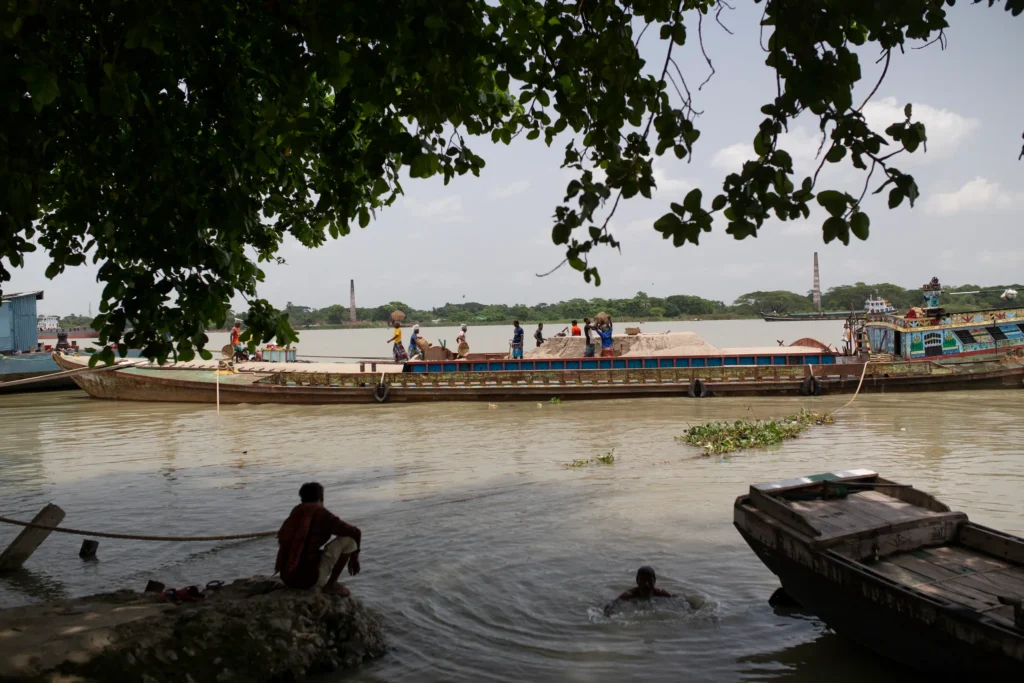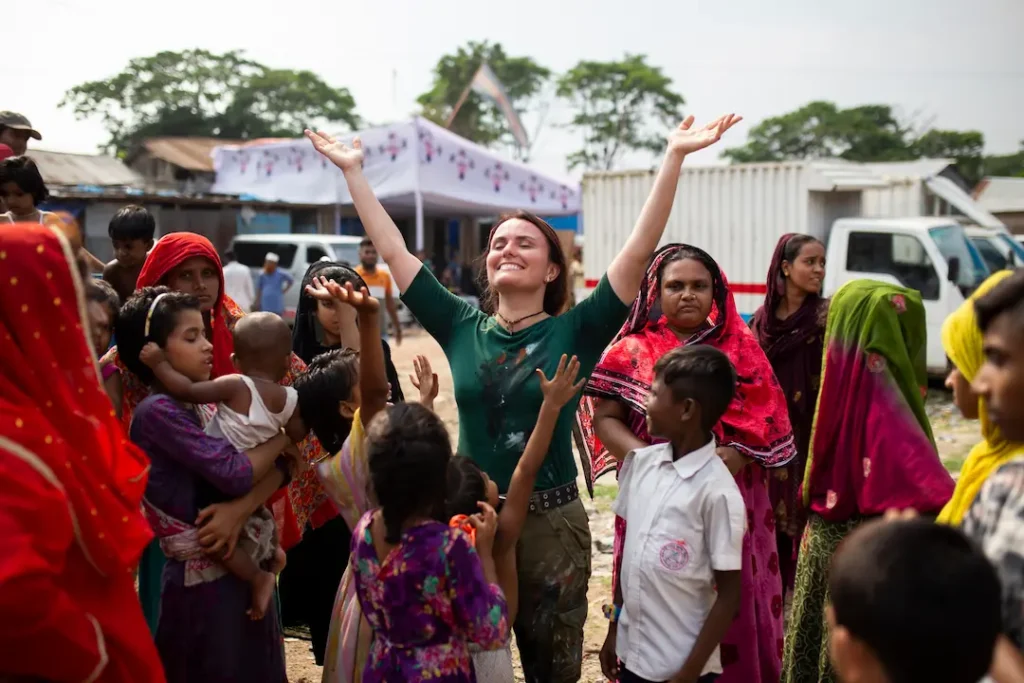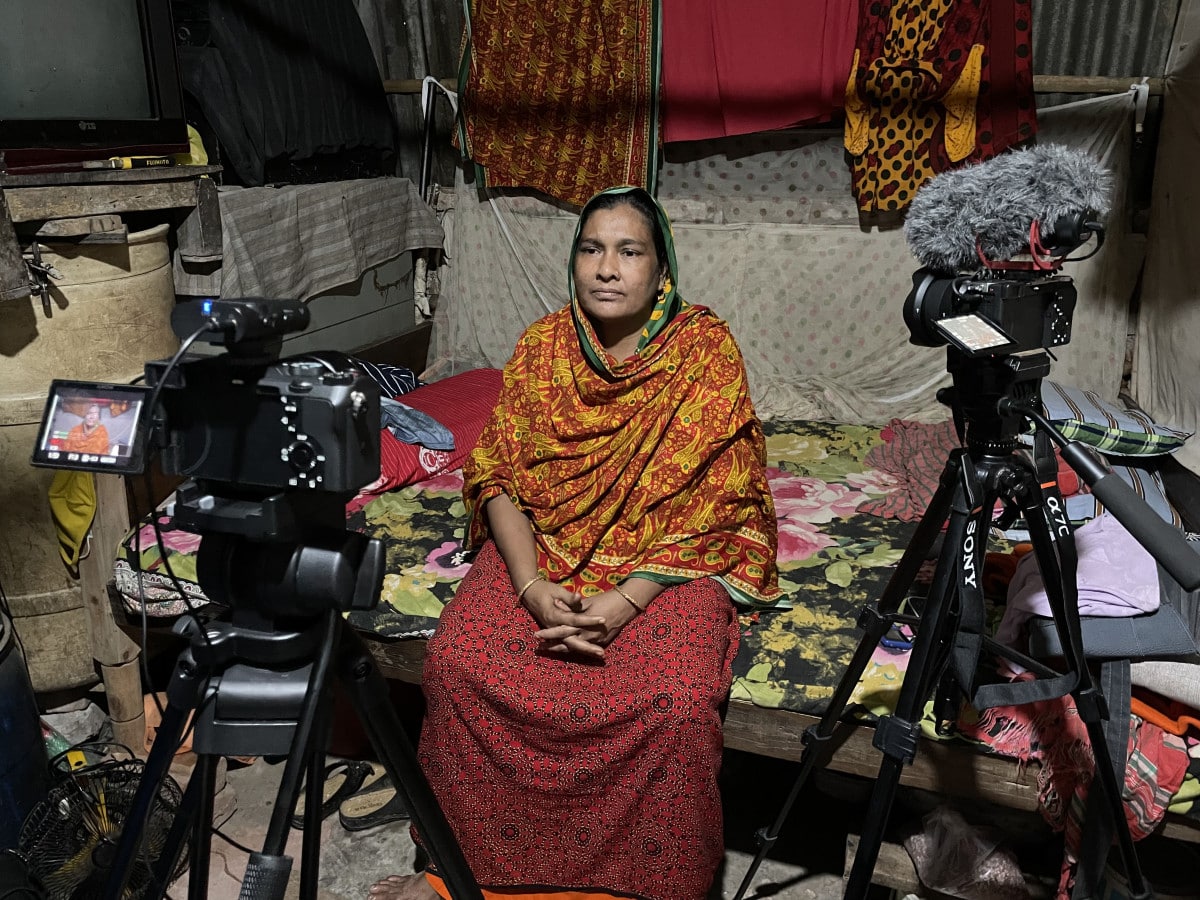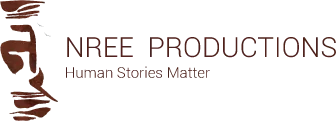Speaking from a visual perspective, the Documentary vs. Movie distinction highlights that both are essentially films. Typically, movies are fictional, while documentaries offer real-life documentation of events.
Movies can be adaptations of real life events formalized in a fictional setup and controlled environment shooting to make it more realistic and entertaining to the audience. It often features fictional narratives, scripted dialogue, and actors portraying characters within a storyline. They aim to entertain and engage audiences through storytelling, cinematography, and audiovisual effects.
On the other hand, documentaries capture real-life events as observed by the filmmaker, presenting them in a style that enhances audience engagement with the narrative.
What is a Documentary?
A documentary is a factual presentation focused on real events or issues, utilizing tools like interviews, archival footage, and narration. Its aim is to authentically explore specific subject matters or topics, frequently delving into real-world issues or events.
What is a Movie?
A movie, or fictional film, is a scripted narrative designed for entertainment. It showcases actors portraying characters in fictitious settings and scenarios. Movies provide fictional stories for entertainment and artistic expression, often diverging from reality to explore imaginative realms and narratives.
Documentary vs. Movie
There are clearly some differences between these two types of films and sometimes differences can be so subtle and confusing. We will dive a bit deeper into this topic today to clear the confusion. The Areas we will look into to compare these two are:
- Narrative Style
- Real VS Reality
- Creative Freedom
- Visual Presentation
- Target Audience
- Impacts
- Production Process
- Evolution and Trends
- Ethical Considerations
- Reception and Critique
Documentary vs. Movie: Explained
1. Narrative Style
The key difference between these two genres lies in the Narrative style. A movie is completely controlled by pre-written script and dialogues which is overseen by the director on set and can be perfected by directing over and over.

On the other hand, in a documentary nothing is predetermined. It’s more of an observational approach to a filmmaker. Stories unfold and may turn in a direction which the filmmaker never imagined in the research phase.
2. Real VS Reality
Movies might be scripted and directed but that certainly doesn’t mean that it cannot portray a reality. There are many great movies which are based on real events. It has been presented to the audience to understand reality in a better way. There might be debates on the biases to recreate this reality.

While during a documentary, as everything is happening in front of the camera in real time, audiences are more serious about what’s going on. Sadly, there are also biases in the documentary making process. The world has seen many biased and propaganda documentaries.
3. Creative Freedom
It is believed that documentary filmmakers enjoy less creative freedom than fictional filmmakers. But, in truth, it totally depends on the filmmaker. Creativity can be explored in many ways during a documentary filmmaking process.
Editing is the stage where Documentary filmmakers show their real talent. However, documentary filmmakers also have visual mind setup before they go for a shoot. Receiving the place can give ideas about what to shoot and when to shoot to make it more creative.

Choosing characters and narrative style is another scope to ensure the creative freedom for the documentary filmmakers. On the other hand, Movies offer filmmakers a high degree of creative freedom to explore imaginative storylines, create fictional worlds, and experiment with visual and narrative techniques.
4. Visual Representations
Documentaries focus on capturing raw, unfiltered footage of real-life events, often employing techniques such as handheld cameras and natural lighting to create a sense of authenticity. They might not have control over what is happening in front of the camera, but documentary Filmmakers shoot in LOG these days to have more control over the color grading and lights.
In movies, visual storytelling plays a crucial role in conveying emotions, themes, and messages to the audience. Filmmakers utilize various cinematic techniques such as cinematography, editing, and special effects to enhance the viewer’s experience.
5. Target Audience

This is where a clear difference occurs between a documentary and a movie. A Movie generally has a larger audience divided into different demographics. Each is interested in different genres of movies. Documentaries have a very low interest group of people in comparison to the general movies. Documentaries may target specific audiences interested in the subject matter or issues addressed in the film.
6. Impacts and Influences
This a very thin line of comparison as both movies and documentaries have serious impacts on the society and both can shape social perception. But, I would give Movies an upper hand in this as they have a larger audience and more ways to reach people, they have more opportunities to have a greater impact.
That doesn’t necessarily narrow down the impact opportunities for a documentary film. Both mediums have the potential to provoke thought, challenge perspectives, and drive positive change in society.
Movies, with their ability to evoke emotions and convey powerful messages, often leave a lasting impression on audiences, influencing popular culture and societal norms. Documentaries, on the other hand, play a crucial role in raising awareness about real-life issues, sparking discussions, and inspiring action.
7. Production Process
Documentaries may involve extensive research, on-location filming, and interviews with real people, requiring flexibility and adaptability to capture unfolding events as they happen.

On the other hand, the production process for movies involves scriptwriting, casting, filming, and post-production editing, often taking months or even years to complete.
Movies might also require serious research if it is about a real incident.
8. Evolution and Trends
The ever-expanding reach of technology, alongside the emergence of streaming platforms and social networks, has revolutionized the filmmaking landscape for both movies and documentaries.
Independent filmmakers now enjoy increased opportunities and exposure, as the filmmaking process becomes more accessible and streamlined. Gone are the days when filmmaking relied solely on bulky equipment and large crews.

Traditional movies are also finding their place on popular streaming platforms such as Netflix and Amazon.
Additionally, documentaries have found niche streaming platforms like MUBI and The Darkroom Rumor, while major platforms like Netflix have dedicated sections for documentaries. As a result, documentary filmmakers no longer solely rely on film festivals for distribution and recognition.
9. Ethical Considerations
Ethical considerations play a crucial role in both movies and documentaries. Filmmakers must navigate the fine line between artistic expression and ethical responsibility when portraying real-life events or fictionalizing stories.
Documentaries, in particular, are expected to maintain journalistic integrity and present factual information without bias or manipulation. Conversely, movies must be mindful of the potential impact of their storytelling on sensitive subjects and avoid perpetuating harmful stereotypes.
The world has seen enough propaganda documentaries and biased films and it will grow even more in the age of surveillance capitalism. A responsible filmmaker irrespective of genre must have these in mind during the process.
10. Reception and Critique
Movies and Documentary are subject to critical evaluation by audiences, critics, and scholars, who assess their artistic merit, storytelling effectiveness, and social impact. While movies often receive mainstream recognition through box office success and awards, Documentary may garner acclaim at film festivals or through specialized distribution channels.
Examples and Case Studies
Notable Documentaries
1. Life After Conflict: Healing the Environmental Wounds of War | earthrise (Al Jazeera English)
- An episode from the documentary series “earthrise” that sheds light on the often overlooked environmental devastation caused by conflicts.
- Explores the impact of war on ecosystems, from chemical contamination of soils to habitat destruction, and the efforts to restore environmental balance in post-conflict regions.
- Features stories of resilience and conservation, including the plight of Rohingya refugees in Bangladesh coexisting with wild elephants, and the rebuilding of Syria’s seed bank amidst the ravages of war.
- Created by Nree Productions, a Leading Documentary Film Production House in Bangladesh.
2. Rohingya Refugee Crisis: Life in Bangladesh’s Largest Refugee Camp (Channel 4 News)
- Documents the plight of Rohingya Muslim refugees fleeing violence in Myanmar, with over 600,000 refugees, including many children, seeking shelter in Bangladesh.
- Channel 4 News explores the conditions in Bangladesh’s largest refugee camp, shedding light on the challenges faced by those forced to flee their homes and the urgent need for international aid and support.
- Highlights the humanitarian crisis and the efforts to provide assistance to the refugees amid overwhelming challenges and limited resources.
Notable Movies
1. The Godfather (Francis Ford Coppola, 1972)
- Adapted from Mario Puzo’s novel, this crime epic follows the Corleone family’s rise to power in the Italian-American mafia.
- Renowned for its masterful storytelling, complex characters, and iconic performances, particularly by Marlon Brando and Al Pacino.
- Cemented its status as a cinematic masterpiece, influencing countless films in the crime genre and earning critical acclaim for its direction, writing, and cinematography.
2. Parasite (Bong Joon-ho, 2019)
- South Korean filmmaker Bong Joon-ho’s darkly comedic social satire about class disparity and the intricacies of the human condition.
- Became the first non-English language film to win the Academy Award for Best Picture, receiving international acclaim for its sharp wit, unpredictable narrative, and stellar ensemble cast.
- Explores themes of inequality and social mobility with nuance and depth, resonating with audiences worldwide and solidifying Bong Joon-ho’s reputation as a visionary filmmaker.
Ethical Considerations in Documentary Filmmaking
Manipulation vs. Truthfulness
Discuss the ethical dilemma of balancing the filmmaker’s artistic vision with the obligation to present an accurate portrayal of reality.
Explore cases where editing techniques, selective framing, or staged scenes may distort the truth and mislead audiences.
Highlight the responsibility of documentary filmmakers to maintain integrity and transparency in their storytelling, avoiding sensationalism or agenda-driven narratives.
Privacy and Consent
Examine the ethical implications of filming subjects without their informed consent or violating their right to privacy.
Address the importance of obtaining consent forms and respecting the boundaries of individuals featured in the documentary.
Discuss instances where blurred lines between public interest and personal privacy necessitate careful ethical considerations, especially in sensitive or vulnerable communities.
Authenticity vs. Dramatization
Explore the tension between authenticity and dramatization in documentary filmmaking.
Analyze the ethical boundaries of reenactments, voiceovers, and other narrative devices used to enhance storytelling.
Consider how artistic liberties can enhance or compromise the integrity of the documentary, and the ethical responsibility to clearly distinguish between factual information and creative interpretation.
Wapping Up!
While movies and documentaries share the common medium of film, they differ significantly in terms of narrative style, degree of reality, creative freedom, and impact on audiences.
Looking ahead, the future of movies and documentaries is likely to be shaped by emerging technologies such as virtual reality, artificial intelligence, and interactive storytelling.
As audiences demand more diverse and immersive experiences, filmmakers will continue to push the boundaries of creativity and innovation in both mediums.


